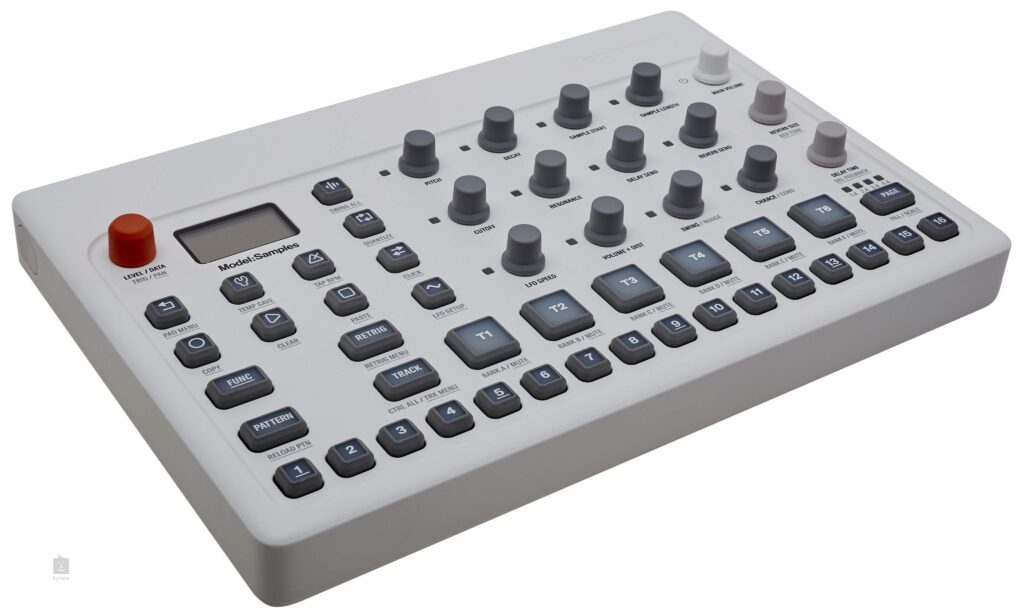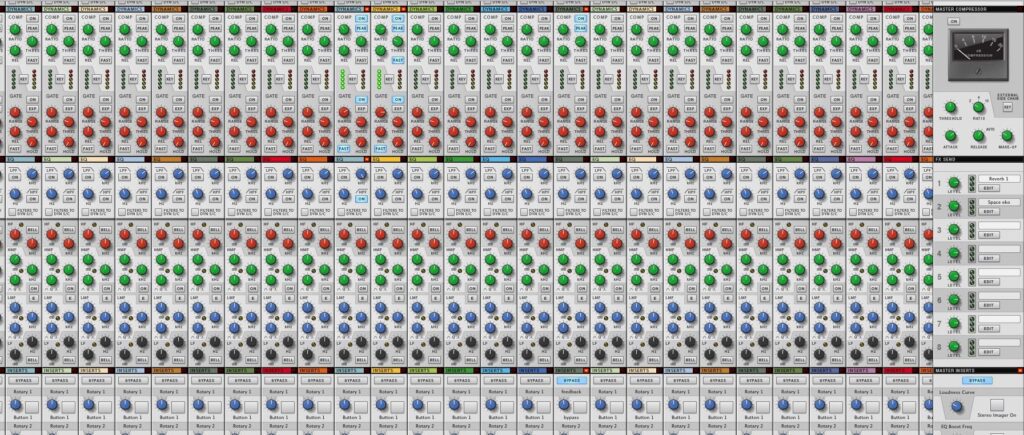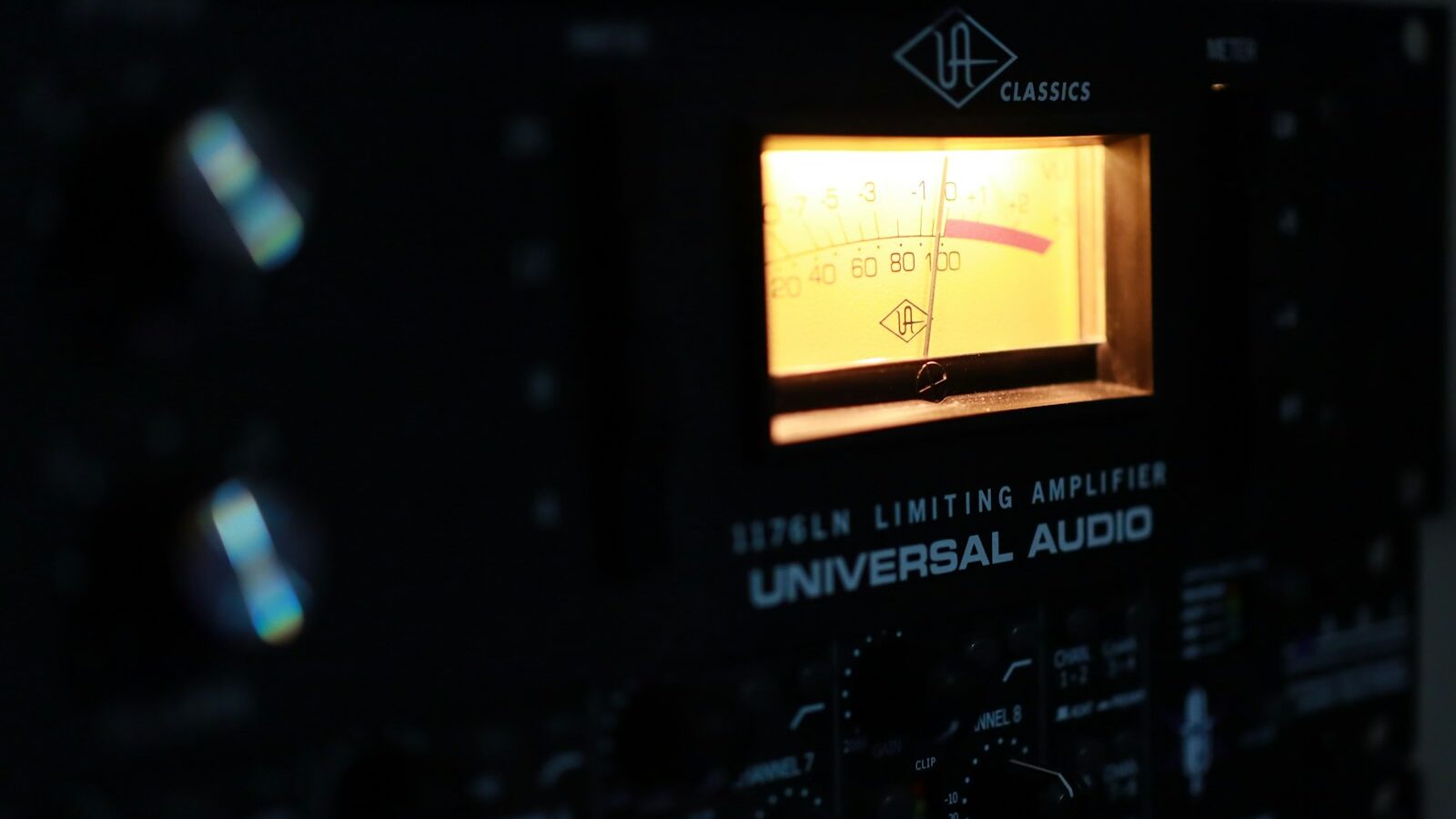Just like anything else, breaking music production down into stages makes everything easier to understand, and certainly makes it feel like less of a daunting task (Is Music Production Hard?)!
There are lots of ways we could break this down, and lots more ways we could blur the lines and move backwards through stages, skip stages, and so on — but here’s a sensible, no-nonsense guide to the stages of music production:
Stage One: The Idea
Okay this might seem like a bit of a no-brainer, but the honest truth is that without any drive, no music production can take place! Music production is an inherently creative pursuit, and if you’re hoping that you’ll be able to sit down at a computer or a piece of gear you saw your favourite artist using and it’ll just spit music out at you, you’re in the wrong game.
You don’t have to have it all planned out from start to finish in your head before you switch anything on, but learning how to consciously consider the direction you want to take a session, whether it’s starting with a skippy drum loop and letting inspiration run from there or knowing you’re after an orchestral mood-maker will massively accelerate the process. No goal equals no progress…
Stage Two: The Gear
Maybe you only have one piece of gear, perhaps an Akai MPC Live II or Ableton Live on your computer. Maybe you’re lucky (or just have Gear Acquisition Syndrome) and have a studio full of stuff to choose from. If that’s the case, stage two is all about deciding what to use to bring things to life. Understanding what you’ll be using and why you’ll be using it is a vital stage in the music production process, because every decision we make early will define the decisions we make further down the line.

A groove box device might give us quick results, but have a process of taking the output from it in order to treat it in later stages. Utilising audio recording instead of MIDI triggering is hands on and quick, but gives less room for tweaking later. Being mindful of the decisions we make with the instruments we use is just as important as anything else, and by being conscious and sticking to our decisions we gain a confidence in our process (which can change from project to project!) that will help us avoid languishing in doubt in the later stages.
Stage Three: Composition
So, we’ve drummed up some inspiration, and we’ve committed to the gear we’re using to actually make the sounds. Now it’s time to write the notes.
There’s no getting around it, music isn’t random! As we move through the stages of music production, one of the most gratifying is the act of actually getting melodies, basslines, drum patterns recorded. Of course, sometimes creating a melody is so gratifying that it’s easy to get stuck here, but composition isn’t just a short loop, it’s a song with a beginning, middle, and end. Defining how all our instruments play, in what order, together and apart, to make a captivating piece of music is called sequencing, and it’s what we’re all here for.
It’s not just the notes that get sequenced, though. Every knob that gets turned, every effect that morphs our sound, all get sequenced so that the story of our piece of music begins to take shape at this vital stage.
Stage Four: Mixing
Mixing is the process of getting all the sounds from the gear we chose in step two recorded and triggered in step three to sound more technically pleasing. Getting the drums to punch just right against the bass, getting the lead synth to occupy its own place in the stereo field and the right frequency range to make sure it’s clear and memorable, all this is mixing. Mixing is a job in and of itself, with people making a career from being mixing engineers — but many people do their own mixes too.

Whether it’s done with a hardware mixing console or, more commonly nowadays, in a DAW (often the same DAW the composition stage is done in), mixing is a significant stage in music production and makes all the emotion created in the composition stage sound as pleasing as possible.
Stage Five: Mastering
The goal of mixing is to get everything sounding good. The goal of mastering is to take that good sounding mix and polish it to perfection — whatever form that perfection takes. Different destinations require different mastering considerations, and there may well be a different master for a song to go to vinyl as to Spotify. Not to make the two sound different, but actually to make them sound more similar, taking into account the quirks and characteristics of the different formats.

Just like mixing, mastering can be a full time job. A mastering engineer will be able to squeeze every last drop of quality from a good mix and make sure it stands tall next to other songs in the genre it’ll be played next to on whatever medium it’s played. And just like mixing, most of us will do our own mastering too.
Whilst mastering is traditionally more about the technical finishing of a song than it is about a creative choice, it’s definitely possible to use the mastering stage to impart a particular character on a song. Especially in circumstances where — and this is often the case — the focus of releasing the music is more focused on the creative and emotional catharsis of doing it, it’s common to focus on ‘good enough’ with a mix and ‘good enough’ with a master, simply getting a song to an appropriate level of loudness and a good sense of energy pulsing through the track.
Are These Stages Important?
Obviously, just like with anything, being too dogmatic is never a recipe for success. It would be short sighted to deny oneself the ability to follow a spark of inspiration during the composition stage and drag out some gear that’d be the perfect complement to what’s developed, even if we were set on a particular workflow before we started.
Many people choose to keep a handle on the mixing process as they compose, finding that little tweaks here and there help them to hear the final song take shape on the fly. And there’s certainly a degree of crossover between mixing and mastering in some styles, especially styles where the interplay between different instruments is used to collage into a certain aesthetic.
As a general rule of thumb, the higher the desired ‘resolution’ of piece of finished music, the more separated and the more considered each stage of the music production process will be. It’s important to be realistic about what it takes to be productive and finish a song, and if you only have six hours to work on a song before it starts to go stale to your ears and you lose interest then using those six hours to get a slightly rough around the edges song actually finished and shared is a much more productive use of time than using them to get as far as getting the drums and bass to sit absolutely perfectly with each other and not even having started on the rest of the mix.
How to Learn Music Production Fast
Being able to break down music production into stages is important, and understanding what each of the stages are, which rules to keep, and when to bend and break them is even more important. We made Essential Music Production to accelerate your understanding of everything to do with music production and give you the skills, knowledge, and confidence to make music — take a look at the video below and check out this page to learn more!


